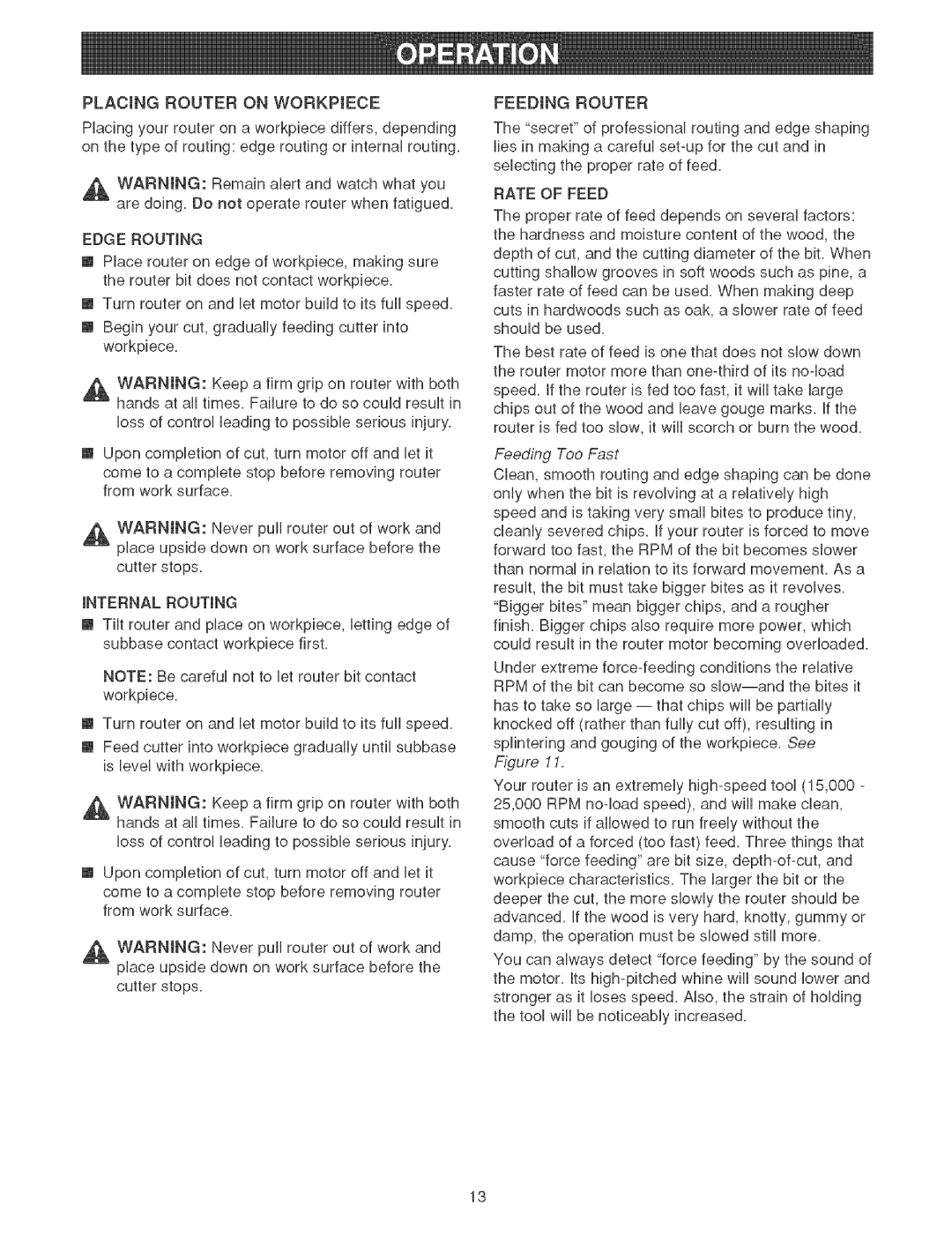
PLACINGROUTERONWORKPIECE
PUacing your router on a workpbce differs, depending on the type of routing: edge routing or internaU routing.
_ WARNING: Remain alert and watch what you are doing. Do not operate router when fatigued.
EDGE ROUTING
[] Place router on edge of workpiece, making sure the router bit does not contact workpiece.
[] Turn router on and let motor build to its full speed.
[] Begin your cut, gradually feeding cutter into workpiece.
_ WARNING: Keep a firm grip on router with both hands at aii times. Failure to do so could result in
loss of control leading to possible serious injury.
[] Upon completion of cut, turn motor off and let it
come to a complete stop before removing router from work surface.
,_ WARNING: Never pull router out of work and place upside down on work surface before the
cutter stops.
INTERNAL ROUTING
[] Tilt router and place on workpiece, letting edge of subbase contact workpiece first.
NOTE: Be careful not to let router bit contact
workpiece.
[] Turn router on and let motor build to its full speed.
[] Feed cutter into workpiece gradually until subbase is level with workpiece.
,_ WARNING: Keep a firm grip on router with both hands at all times. Failure to do so could result in
loss of control leading to possible serious injury.
[] Upon completion of cut, turn motor off and let it
come to a complete stop before removing router from work surface.
_ WARNING: Never pull router out of work and place upside down on work surface before the
cutter stops.
FEEDING ROUTER
The "secret" of professional routing and edge shaping lies in making a careful
RATE OF FEED
The proper rate of feed depends on several factors: the hardness and moisture content of the wood, the depth of cut, and the cutting diameter of the bit. When cutting shallow grooves in soft woods such as pine, a faster rate of feed can be used. When making deep cuts in hardwoods such as oak, a slower rate of feed should be used.
The best rate of feed is one that does not slow down the router motor more than
Feeding Too Fast
Clean, smooth routing and edge shaping can be done only when the bit is revolving at a relatively high speed and is taking very small bites to produce tiny, cleanly severed chips. If your router is forced to move forward too fast, the RPM of the bit becomes slower than normal in relation to its forward movement. As a result, the bit must take bigger bites as it revolves. "Bigger bites" mean bigger chips, and a rougher finish. Bigger chips also require more power, which could result in the router motor becoming overloaded.
Under extreme
has to take so large
Your router is an extremely
You can always detect "force feeding" by the sound of the motor. Its
13
